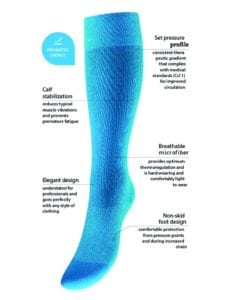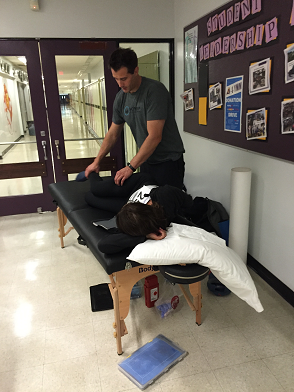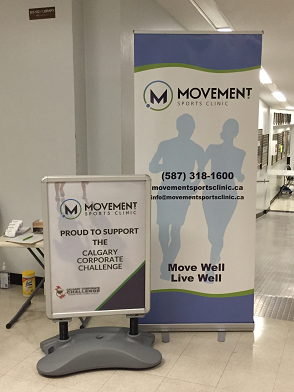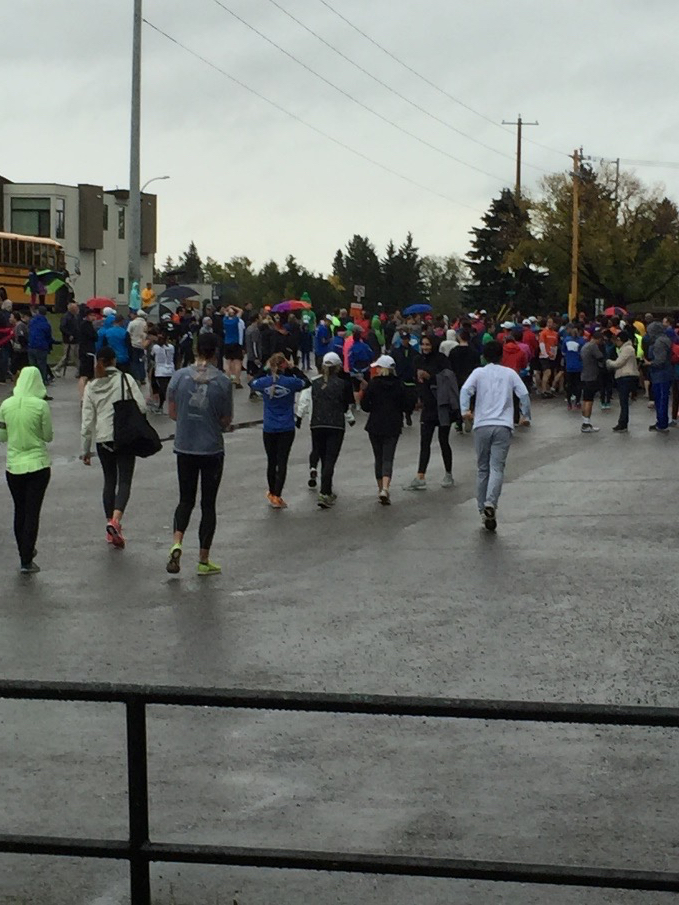Effect on inflammation, recovery, performance and prevention of blood clots
 Compression garments have been used for years medically to effectively manage swelling of the extremities. Most commonly seen as socks, the graduated compression from toes to the upper leg help our circulatory system move the blood back towards the heart. Metabolic waste products and the congestion of inflammation are moved out of the interstitial tissue and back into the bloodstream for removal. In bedridden or inactive patients medical grade graduated compression socks have been proven effective to reduce deep vein thrombosis (DVT).
Compression garments have been used for years medically to effectively manage swelling of the extremities. Most commonly seen as socks, the graduated compression from toes to the upper leg help our circulatory system move the blood back towards the heart. Metabolic waste products and the congestion of inflammation are moved out of the interstitial tissue and back into the bloodstream for removal. In bedridden or inactive patients medical grade graduated compression socks have been proven effective to reduce deep vein thrombosis (DVT).
In recent times, athletes have been exposed to compression clothing to aid in recovery and potentially help performance. Some of the proposed benefits of athletic compression socks are as follows:
- Promoting circulation
- Reducing muscle vibration
- Protection of the Achilles tendon from pressure and friction
- Reduction in perceived effort
- Providing more comfort and support
Regarding recovery, there is high level evidence that use of compression socks following strenuous endurance activity can reduce risk of DVT. Marathon runners or long course triathletes may be at higher risk for DVT post event due to dehydration and distance traveled.
In literature reviews regarding compression socks and performance enhancement, the evidence is not as clear. Anecdotally there do appear to be perceived performance benefits. Some studies demonstrated decreased reported muscle soreness and perceived fatigue compared to a control group. General recommendations are to wear compression socks for long exercise sessions and for 24 hours afterwards.
In summary, use of compression socks to aid in decreasing inflammation post injury and use after long duration running and during long flights (>4hour) to prevent DVT makes good sense. Placebo effect could be in place for those that feel enhanced performance while using the socks, but the psychological benefit could still positively impact results.
To be effective, compression needs to be tighter at the ankle and decreasing to the knee, fit properly and have 22-32mmHg of pressure. The Bauerfeind Performance Compression Socks we sell at Movement have this medical grade compression.
If you would like more information, please check out Bauerfeind’s website by clicking the logo:
References
Clark MJ et al. Compression stockings for preventing deep vein thrombosis in airline passengers.Cochrane Database Syst Rev. 2016 Sep 14;9:
Wakefield et al. Elastic compression stockings: the jury is still out. The Lancet Haematology June 2016, Volume3(Issue6)
Stanek JM. The Effectiveness of Compression Socks on Athletic Performance and Recovery. Journal of Sport Rehabilitation © 2015 Human Kinetics, Inc.
Zaleski AL et al. The effect of compression socks worn during a marathon on hemostatic balance. Phys Sportsmed. 2015 Nov;43(4):336-41. 2




 Movement Sports Clinic was proud to help support the
Movement Sports Clinic was proud to help support the 






